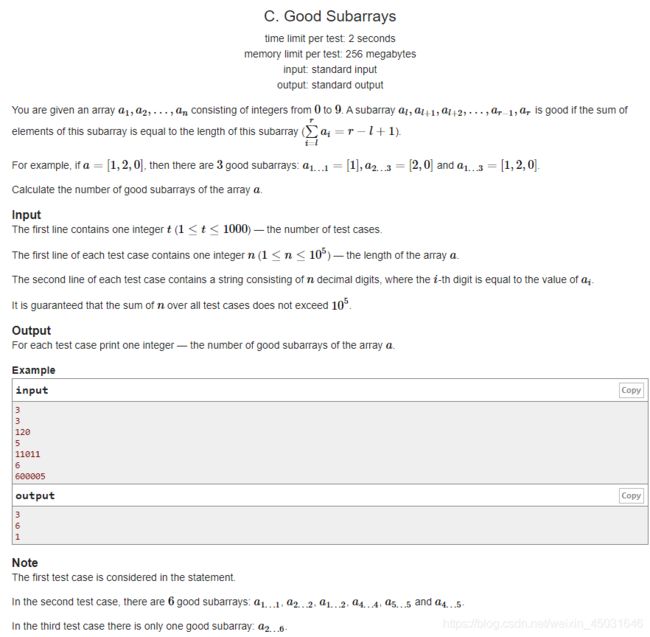codeforces C. Good Subarrays
题目
题意:
在一个序列中,我们需要求出有多少个区间满足 ∑ i = l r a i = r − l + 1 \sum^r_{i=l}a_i=r-l+1 ∑i=lrai=r−l+1。
思路:
在这题之前我们应该可以想到一个类似的一题,就是有多少个区间满足 ∑ i = l r a i = 0 \sum^r_{i=l}a_i=0 ∑i=lrai=0,这个就是计算前缀和,如果某两个前缀和相等,那么也就是说明 c n t y + x − c n t x = 0 cnt_{y+x}-cnt_x=0 cnty+x−cntx=0满足 ∑ i = x x + y a i = 0 \sum^{x+y}_{i=x}a_i=0 ∑i=xx+yai=0,所以这个区间就是一个满足条件的区间,所以就是求满足有多少个相等的前缀和。
本题的话就是求满足 ∑ i = x x + y a i = x + y − x + 1 → ∑ i = x x + y a i = ∑ i = x x + y 1 → ∑ i = x x + y a i − ∑ i = x x + y 1 = 0 → ∑ i = x x + y a i − 1 = 0 \sum^{x+y}_{i=x}a_i= x+y-x+1\to \sum^{x+y}_{i=x}a_i=\sum^{x+y}_{i=x}1\\\to\sum^{x+y}_{i=x}a_i-\sum^{x+y}_{i=x}1 =0\to \sum^{x+y}_{i=x}a_i-1 =0 i=x∑x+yai=x+y−x+1→i=x∑x+yai=i=x∑x+y1→i=x∑x+yai−i=x∑x+y1=0→i=x∑x+yai−1=0
这就和之前说的 ∑ i = x x + y a i = 0 \sum^{x+y}_{i=x}a_i=0 ∑i=xx+yai=0的情况类似了。
#include 